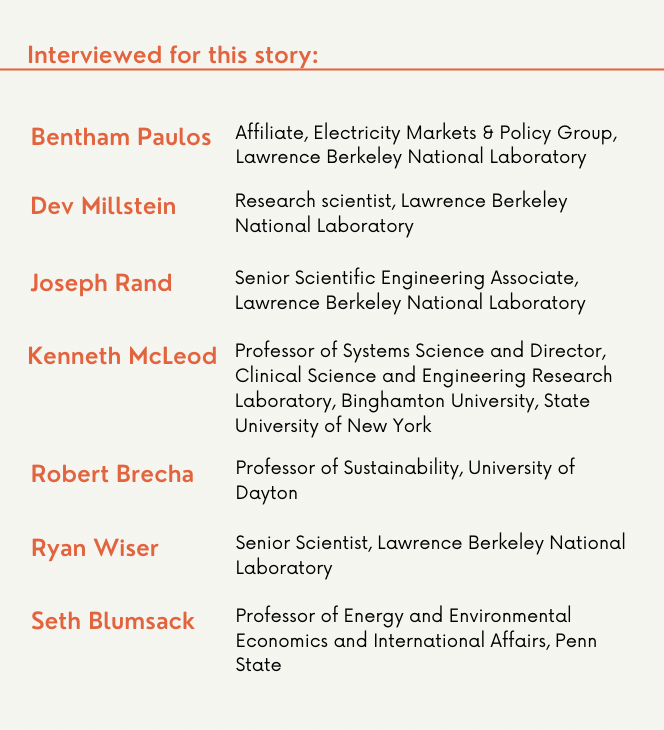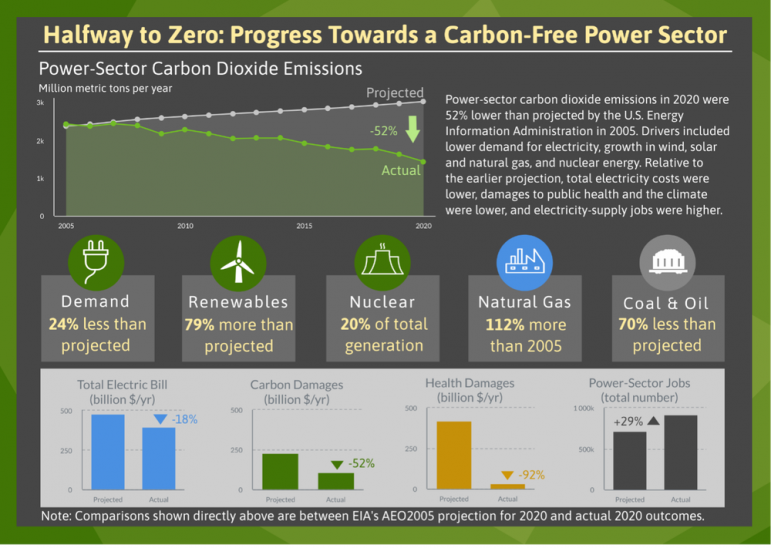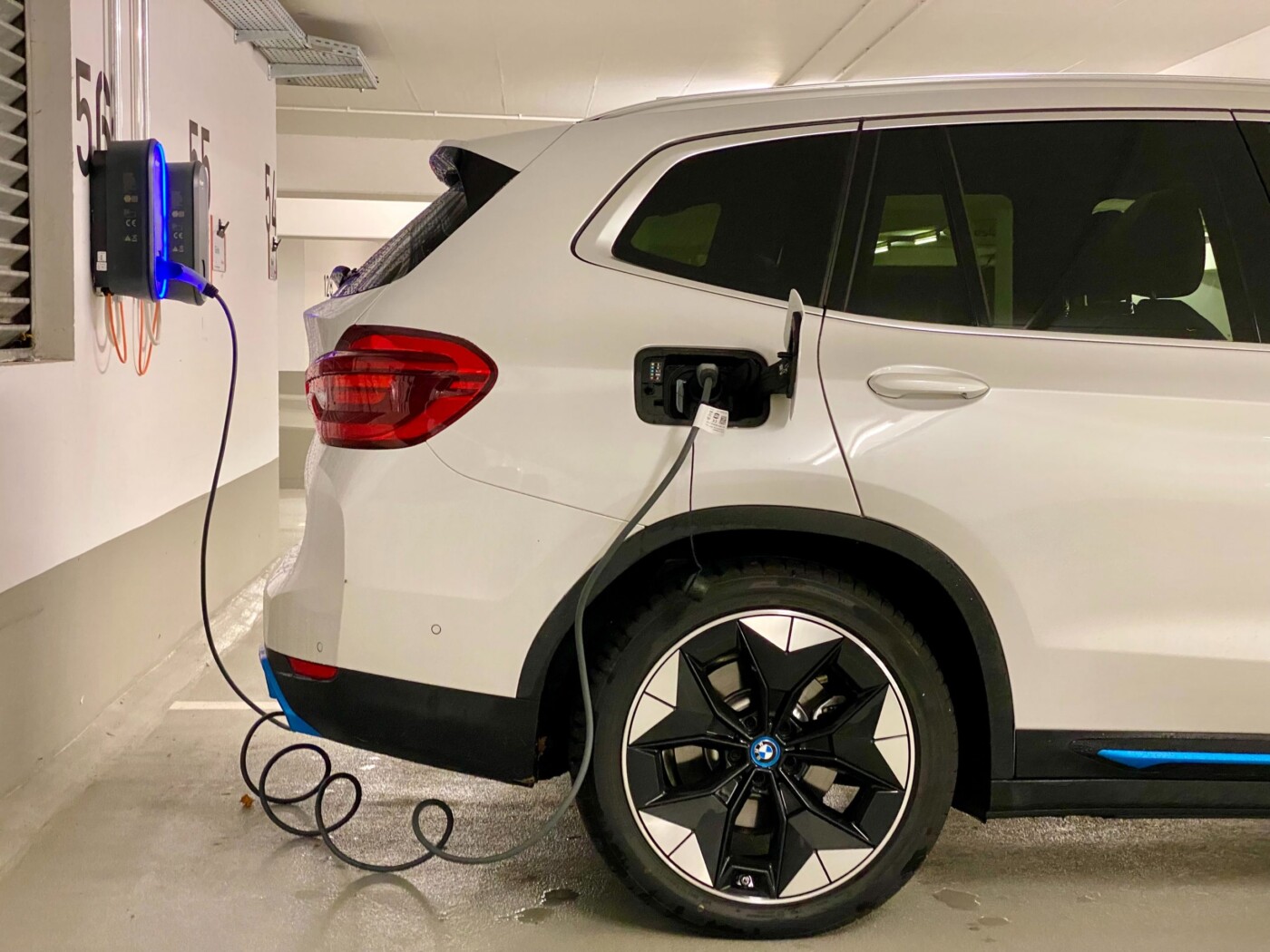
The latest reports from the Intergovernmental Panel on Climate Change show that to avoid massive losses and damage from global warming, nations must act quickly to reduce their greenhouse gas emissions.
The good news is that experts believe it’s possible to cut global greenhouse gas emissions in half by 2030 through steps such as using energy more efficiently, slowing deforestation and speeding up the adoption of renewable energy.
Many of those strategies require new laws, regulations or funding to move forward at the speed and scale that’s needed. But one strategy that’s increasingly feasible for many consumers is powering their homes and devices with electricity from clean sources.
These four articles from our archives explain why electrifying homes is an important climate strategy and how consumers can get started.
1. Why go electric?
As of 2020, home energy use accounted for about one-sixth of total U.S. energy consumption. Nearly half (47%) of this energy came from electricity, followed by natural gas (42%), oil (8%) and renewable energy (7%). By far the largest home energy use is for heating and air conditioning, followed by lighting, refrigerators and other appliances.
The most effective way to reduce greenhouse gas emissions from home energy consumption is to substitute electricity generated from low- and zero-carbon sources for oil and natural gas. And the power sector is rapidly moving that way: As a 2021 report from Lawrence Berkeley National Laboratory showed, power producers have reduced their carbon emissions by 50% from what energy experts predicted in 2005.
“This drop happened thanks to policy, market and technology drivers,” a team of Lawrence Berkeley lab analysts concluded. Wind and solar power have scaled up and cut their costs, so utilities are using more of them. Cheap natural gas has replaced generation from dirtier coal. And public policies have encouraged the use of energy-efficient technologies like LED light bulbs. These converging trends make electric power an increasingly climate-friendly energy choice.
Read more: The US electric power sector is halfway to zero carbon emissions

2. Heat pumps for cold and hot days
Since heating and cooling use so much energy, switching from an oil- or gas-powered furnace to a heat pump can greatly reduce a home’s carbon footprint. As University of Dayton sustainability expert Robert Brecha explains, heat pumps work by moving heat in and out of buildings, not by burning fossil fuel.
“Extremely cold fluid circulates through coils of tubing in the heat pump’s outdoor unit,” Brecha writes. “That fluid absorbs energy in the form of heat from the surrounding air, which is warmer than the fluid. The fluid vaporizes and then circulates into a compressor. Compressing any gas heats it up, so this process generates heat. Then the vapor moves through coils of tubing in the indoor unit of the heat pump, heating the building.”
In summer, the process reverses: Heat pumps take energy from indoors and move that heat outdoors, just as a refrigerator removes heat from the chamber where it stores food and expels it into the air in the room where it sits.
Another option is a geothermal heat pump, which collects warmth from the earth and uses the same process as air source heat pumps to move it into buildings. These systems cost more, since installing them involves excavation to bury tubing below ground, but they also reduce electricity use.
3. Cooking without gas – or heat
For people who like to cook, the biggest sticking point of going electric is the prospect of using an electric stove. Many home chefs see gas flames as more responsive and precise than electric burners.
But magnetic induction, which cooks food by generating a magnetic field under the pot, eliminates the need to fire up a burner altogether.
“Instead of conventional burners, the cooking spots on induction cooktops are called hobs, and consist of wire coils embedded in the cooktop’s surface,” writes Binghamton University electrical engineering professor Kenneth McLeod.
Moving an electric charge through those wires creates a magnetic field, which in turn creates an electric field in the bottom of the cookware. “Because of resistance, the pan will heat up, even though the hob does not,” McLeod explains.
Induction cooktops warm up and cool down very quickly and offer highly accurate temperature control. They also are easy to clean, since they are made of glass, and safer than electric stoves since the hobs don’t stay hot when pans are lifted off them. Many utilities are offering rebates to cover the higher cost of induction cooktops.
Read more: Magnetic induction cooking can cut your kitchen’s carbon footprint
4. Electric cars as backup power sources
Electrifying systems like home heating and cooking made residents even more vulnerable to power outages. Soon, however, a new backup system could become available: powering your home from your electric vehicle.
With interest in electric cars and light trucks rising in the U.S., auto makers are introducing many new EV models and designs. Some of these new rides will offer bidirectional charging – the ability to charge a car battery at home, then move that power back into the house, and eventually, into the grid.
[Over 150,000 readers rely on The Conversation’s newsletters to understand the world. Sign up today.]
Only a few models offer this capacity now, and it requires special equipment that can add several thousand dollars to the price of an EV. But Penn State energy expert Seth Blumsack sees value in this emerging technology.
“Enabling homeowners to use their vehicles as backup when the power goes down would reduce the social impacts of large-scale blackouts. It also would give utilities more time to restore service – especially when there is substantial damage to power poles and wires,” Blumsack explains. “Bidirectional charging is also an integral part of a broader vision for a next-generation electric grid in which millions of EVs are constantly taking power from the grid and giving it back – a key element of an electrified future.”
Read more: Can my electric car power my house? Not yet for most drivers, but vehicle-to-home charging is coming
Editor’s note: This story is a roundup of articles from The Conversation’s archives.
